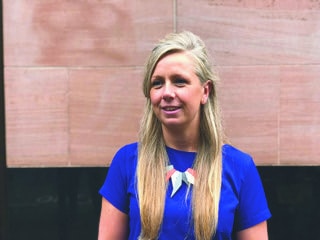
The best motivation for change can arise from a crisis. Ingrained ways of doing things go out of the window and new sets of behaviours are adopted rapidly to respond to a changed world.
The pandemic was therefore a prime time where governments and health systems turned to behaviour change models to get the public to live by new rules to help reduce its impact. As we emerge from the pandemic, there is an opportunity to deploy behavioural science to shape better healthcare in the future.
The messages matter…
We have seen good and bad manifestations of attempted behaviour change during the pandemic. Population-wide communications grounded in behavioural science were the cornerstone in influencing the general public. Experimenting found that using altruistic language was more successful in getting people to follow the rules as people are more likely to put self-interest aside if they believe they are contributing to the collective good. ‘Don’t Spread the Disease’ was more effective than ‘Don’t Get the Disease’.
Inevitably some messaging underpinned by behaviour change had unintended consequences. ‘Stay at home’ messaging was so powerful that people who needed to attend medical appointments missed these out of fear from contracting COVID-19 or because of a feeling that the needs of society outweighed those of the individual.
A key learning from the pandemic for future such approaches in healthcare communications is not to take a ‘one-size-fits-all’ approach which risks leaving people behind. When you are trying to change behaviours with particular groups of patients and people, insights really matter.
It is essential to think about context, culture and community when trying to develop interventions that truly change behaviour, so that you do not prompt unintended consequences which are detrimental or which disenfranchise some people.
Medicines adherence is one such example where behaviour change can play a role, but where a ‘one-size-fits-all’ approach might be counterproductive. The World Health Organization has said that in developed countries, adherence to long-term therapies is only around 50%. Pharmaceutical companies should be looking at behaviour change in combination with user-centred design techniques to help build tools that mobilise and empower patients to help themselves. One option alone will not effect the desired change, so ensuring that flexibility and choice are built into interventions will encourage more people to take positive action.
…and so do the messengers
The pandemic also clarified that it is messengers and not only messages that influence people. We saw this through the spread of misinformation on social media, where it is estimated that only 20% of COVID-19-related misinformation was produced by politicians, celebrities and other prominent figures. However, these posts were disproportionately liked and retweeted – amplifying them so that they represented 69% of social media engagement.
Messengers can be ‘hard’, driven by status, like politicians and healthcare professionals (HCPs), or ‘soft’ which are connectedness driven, ‘people like me’. It is crucial that in healthcare campaigns the right messengers are identified based on the audience you are trying to influence. To dispel myths and vaccine hesitancy in BAME communities, comedians Romesh Ranganathan and Meera Syal, and cricketer Moeen Ali made a video urging people to get the COVID-19 vaccine. This was entirely independent of government, but tapped into the psychology that individuals are more likely to listen to and believe ‘people like me’.
Disease awareness campaigns no longer need to be faced by HCPs or patient advocacy groups. Micro-influencers, patients and people from diverse backgrounds are key in influencing behaviour.
You should think carefully about what you’re asking
At the height of the pandemic, health data was broadcast on TV every evening. Data tracking COVID-19 infections, hospitalisations and deaths was provided by the public and health systems to enable real-time surveillance which was then communicated by scientists to the general public. Sharing health data about COVID-19 was mandated by the Health Secretary as part of the emergency response so, while not a behaviour change, it opened the door for one to be created.
We conducted some research at the end of 2020 which found that there had been a positive upswing in the public being more comfortable sharing their health data with the pharmaceutical industry (26%) and diagnostic companies (25%) since the outbreak. The real-life example of using COVID-19 data to inform behaviour provided an opportunity for governments, healthcare systems, patient groups and industry to apply behavioural science to effect a positive change in health data sharing.
We know that people value benefits in exchange for data. The Home Office managed to persuade millions of people to switch to biometric passports when it was framed around ‘save 30 minutes in the customs queue’. Any requests about sharing personal health data should be accompanied
by a personal and meaningful benefit.
Think about the ending
Behaviour change is not a linear process, and sustained change will depend on the benefit individuals believe they have derived over time. We know that how things end matters and that the final moments of an experience get etched in our minds.
Healthcare systems and industry have gained huge insight from behaviour change experiments during the pandemic. It is critical that these learnings are applied for good in the future.
Rachel Rowson is Head of Health Innovation at MHP Mischief





